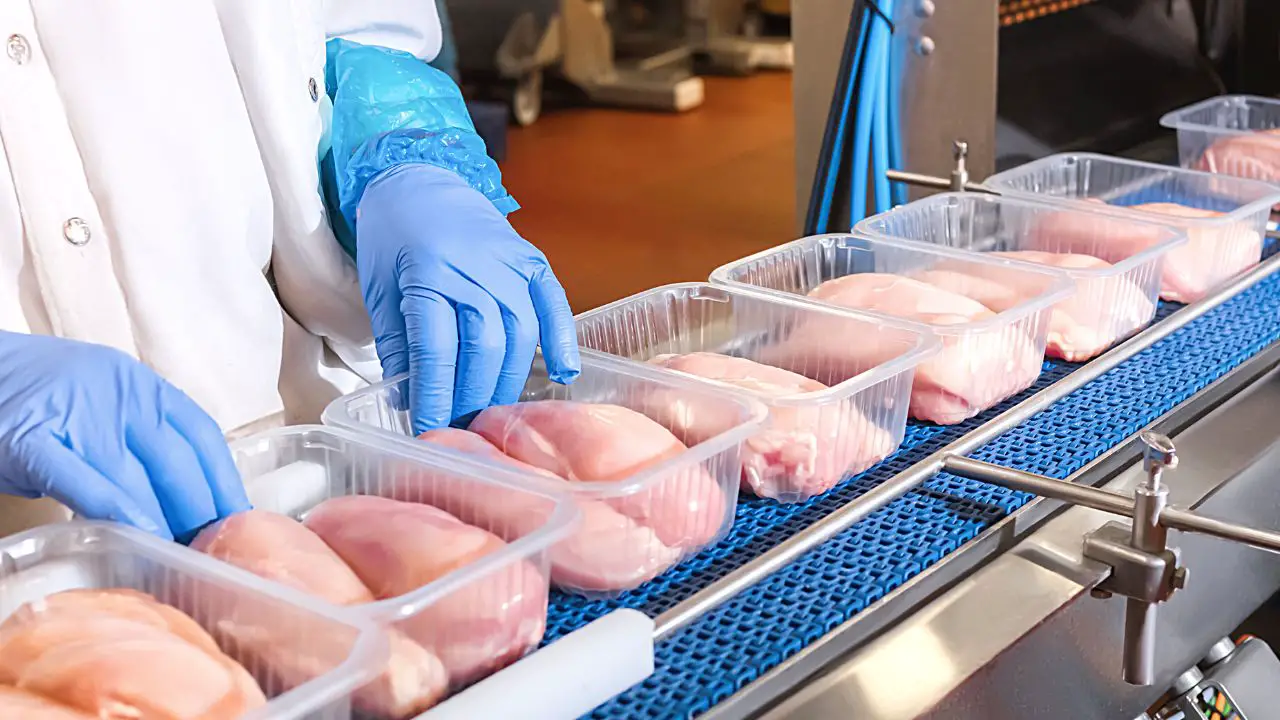The global food industry is as complex as it is fascinating. It’s vast, and its scale makes it hard to gauge the many interesting tidbits of information that lurk beneath the surface.
To give you a better idea of the intricacy behind the production of your everyday meals, take a look at these mind-blowing global food production statistics and get ready to discover what lies behind the food industry.
14 Interesting Global Food Production Statistics That Will Surprise You:
1. 12 Plants And 5 Animal Species Are Responsible For 75% Of The World’s Food
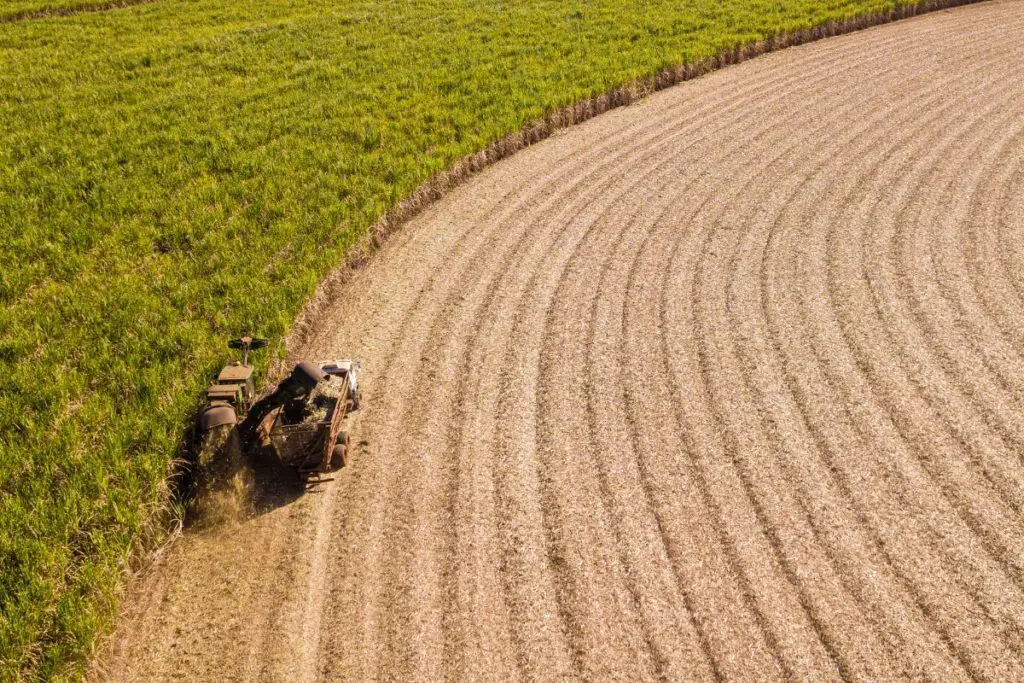
According to the United Nations Food and Agricultural Organization (FAO), the global food supply is much less diverse than you might think.
Sugarcane is the most produced crop worldwide, followed by maize, rice, wheat, potatoes, soybeans, cassava, tomatoes, bananas, onions, apples, and grapes. On the side of meat, beef takes the most significant percentage, followed by chicken, pork, goat, and sheep [1].
Downside? This leaves our food system vulnerable to climate change, pests, and disease.
2. The Cavendish Banana May Go Extinct Soon

It turns out 99% of banana production is a single variety—Cavendish—particularly vulnerable to the fungal Panama disease called Tropical Race 4. The Cavendish banana is sterile, which means plants are clones of one another and equally vulnerable to the fungus. If not stopped, this fungus has the potential to decimate the $25 billion a year banana industry [2].
Worst part? This isn’t the first time it happened—the previous worldwide banana, Gros Michel, went extinct in this same manner.
Read Also: Top 5 Food-Producing Countries In The World.
3. Food Production Accounts For 70% Of All Freshwater Usage Worldwide
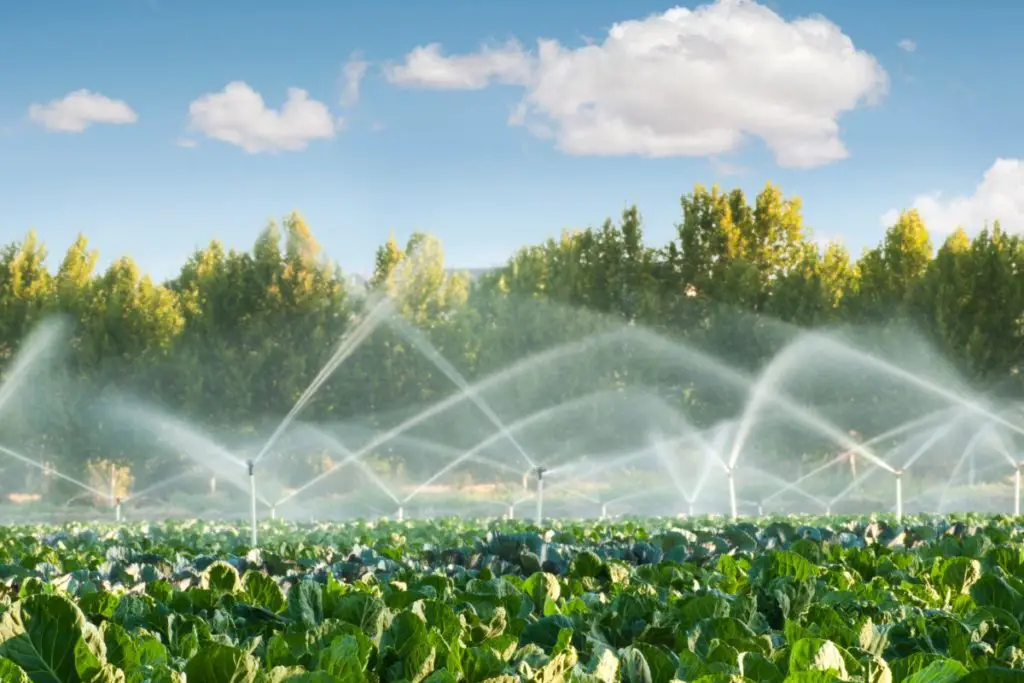
Did you know that the food industry is the biggest consumer of water resources?
According to the World Bank, agriculture accounts for an average of 70% of worldwide freshwater withdrawals. Of course, this means that a sustainable outlook on future food production requires taking a long, hard look at how we use freshwater [3].
4. Food Waste Is 40% of The Food Supply

In the United States, there is a lot of food waste. According to the U.S. Department of Agriculture, food waste makes up approximately 30% to 40% of the food supply.
This means that nearly half of all the food supply produced in the United States ends up wasted—31% of which happens at the retail and consumer levels. In solid numbers, this is 133 billion pounds [4].
Read Also: Staggering Amount Of Food an Average Person Eats In a Year!
5. There May Be A Global Food Shortage Coming Very Soon

An unprecedented global fertilizer shortage is just one of the many consequences of the many compounded crises going on worldwide, but it will lead to tangible and devastating results quite soon.
Following the shortage, fertilizer prices are up 70% compared to last year, which means most farmers cannot afford it. Naturally, this could lead to reduced crop production and increased costs for the final consumer [5].
Read Also: Cost of 6 Month Food Supply for a Family of 4 – (Simple Survival Kit).
6. Four Companies Process 85% Of Beef In the United States
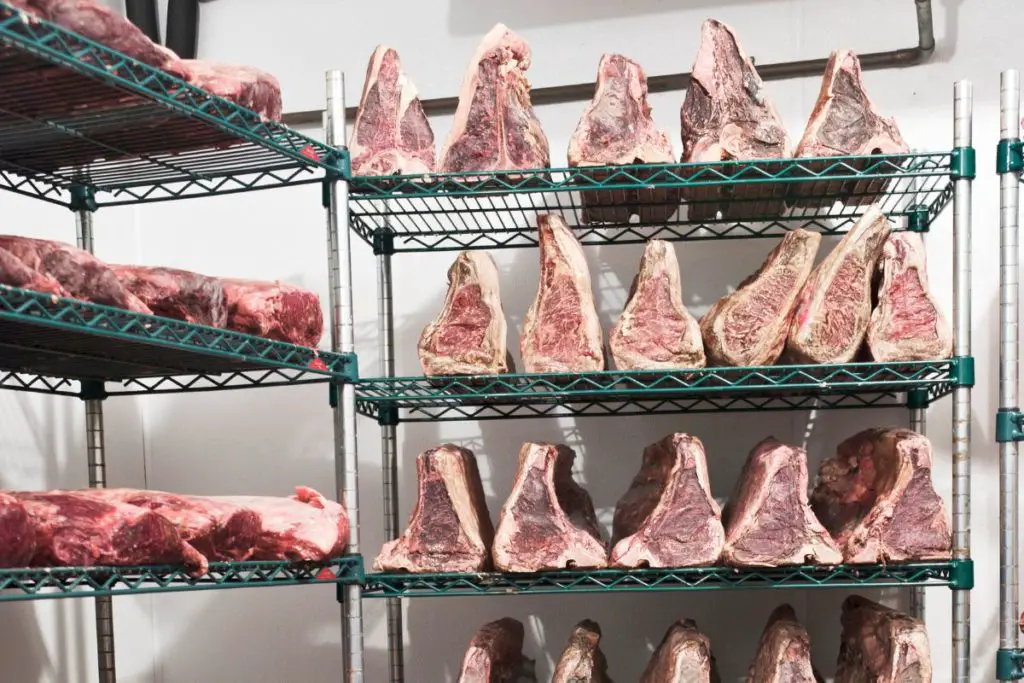
Beef meat production in the United States is near entirely controlled by just four companies—Cargill, Tyson Foods Inc, JBS SA, and National Beef Packing Co.
These circumstances have led to concerns regarding anticompetitive practice in the meat industry, as ranchers have little control over prices and supply compared to large companies. As such, some lawmakers have decided to study introducing legislation to monitor the beef industry [6].
7. Pesticide Use Hasn’t Gone Down
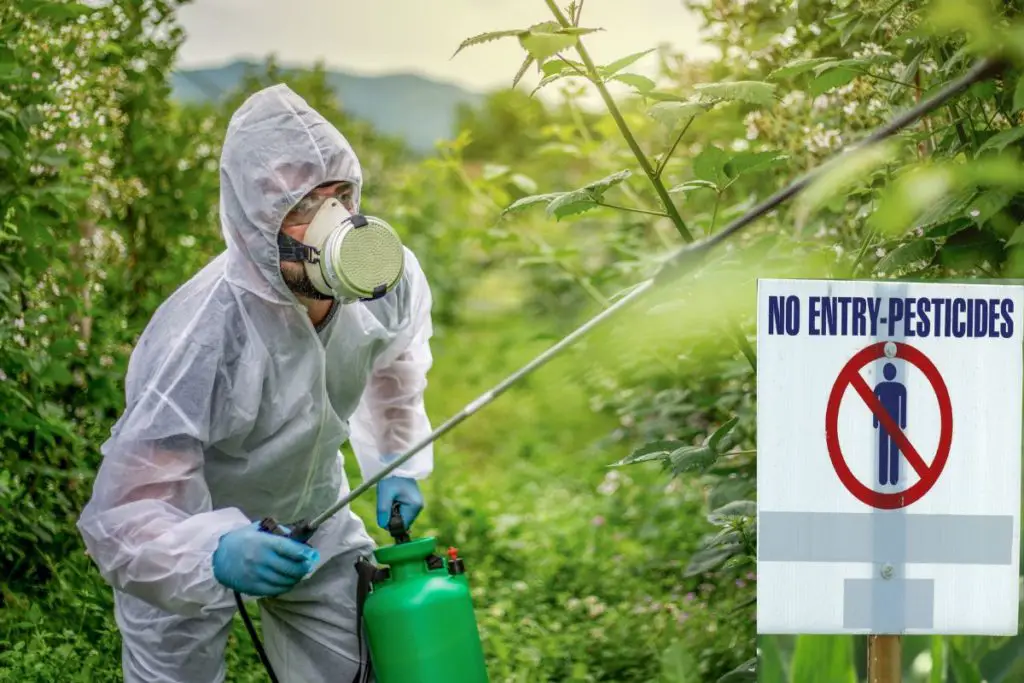
Although pesticide use worldwide hit its peak in 1981, it has not gone anywhere. In fact, instead of reducing its usage, pesticide use went up 36% between 2000 and 2019 [7].
The good news is that it has remained at that level. The number reached stability in 2012 and plateaued without any significant spikes.
8. Livestock And Fisheries Make 31% Of Food Gas Emissions
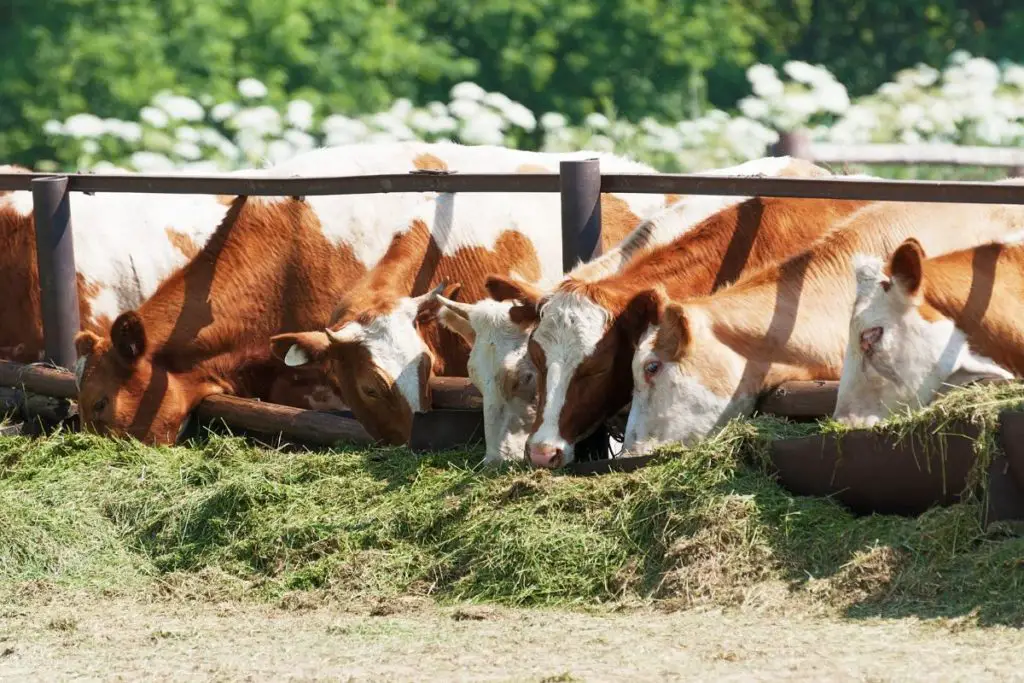
One-quarter of the total greenhouse gas emissions worldwide come directly from food and agriculture, with 31% coming specifically from livestock and fisheries [8].
Now get ready for a surprise—a significant part comes from ruminant livestock passing gasses. One cow can produce up to 200kg of methane a year through farts. In total, it makes up approximately a third of all agriculture gas emissions [9]. But don’t worry, cow farts are not harmful to the environment.
If you are worried about flatulence and methane gas, read: How To Stop Farting – Gassy Foods To Avoid And Tips For Quick Relief.
9. Vegan Sales Are On A Steady Rise

The forecasted market value of plant-based meat worldwide is optimistic about the future of vegan options. Estimations claim it’ll grow from $11.1 million in 2019 to a shocking $35.5 in 2027 [10].
However, because only 1% of the global population is vegan then this trend is likely going to level out in the future.
10. Edible Insects Are Sold As Novelty Snack
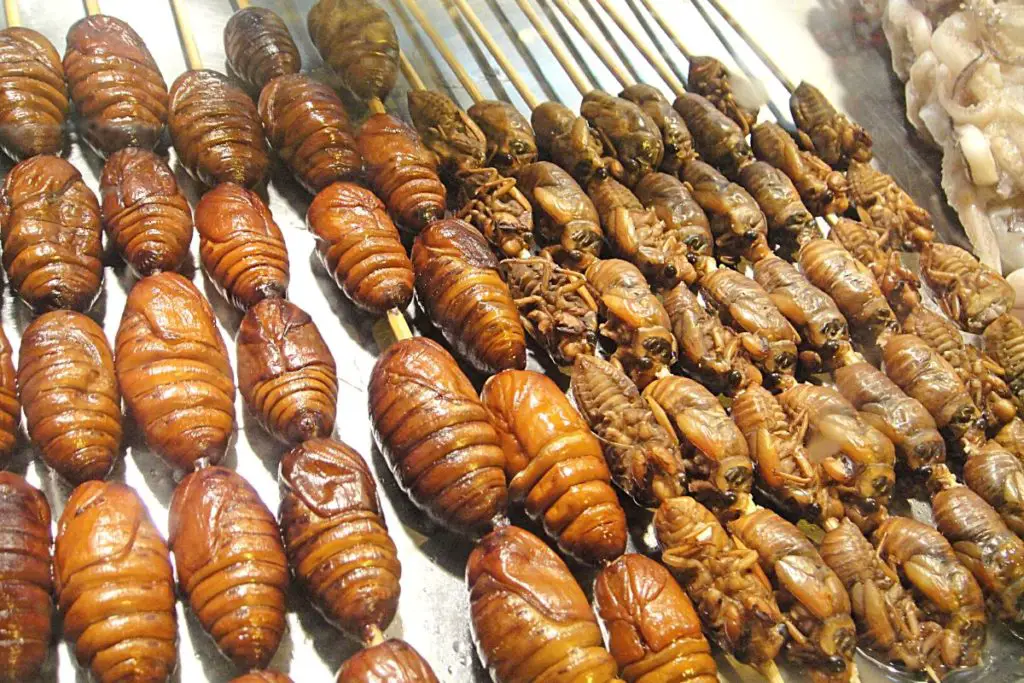
Besides being rather icky for some of us, eating certain types of insects has become a popular novelty snack, Although a fleeting trend, these roasted creepy critters might be incredibly nutritious.
How so? It turns out insects such as crickets or beetles have a high nutritional value and are a rich source of protein [11].
Up for a crazy challenge? Here are the 6 ‘Best’ Edible Insects and Bugs And Ones You Should NOT Eat!
11. Nearly Half Of The World’s Diet Comes From Grains
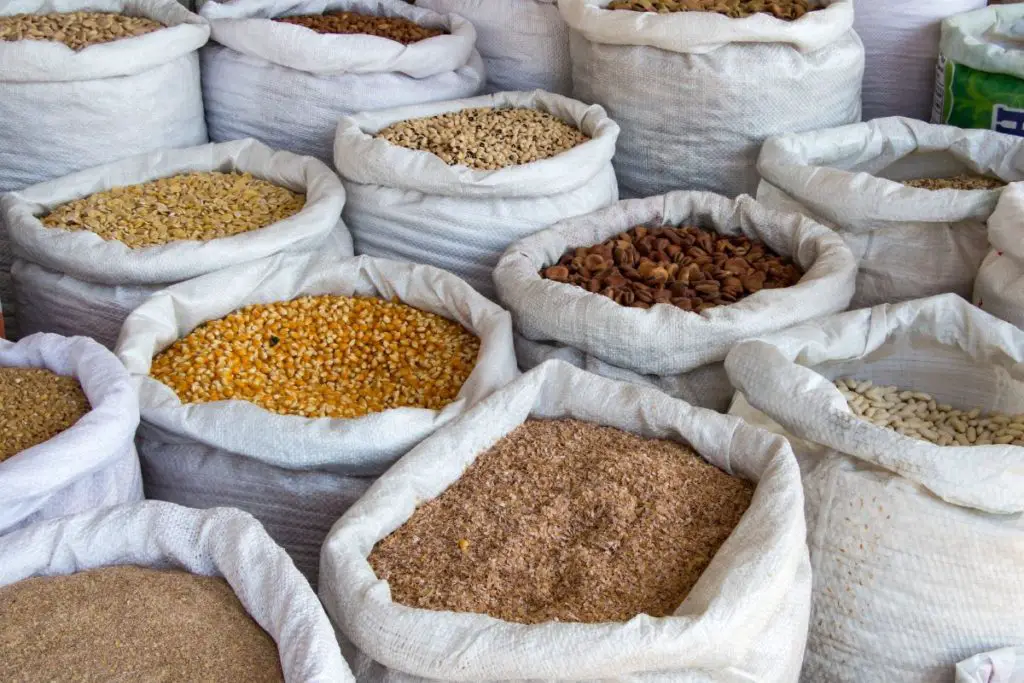
Approximately 45% of the calories per person around the world come from grains—particularly rice and wheat, which make up over half of that percentage.
However, the United States sits well below the world average. According to National Geographic, the average American’s diet comprises 22% grains, while sugar and fat make up an impressive 37% [12].
12. Fast Food Meal Portions Keep Increasing In Size
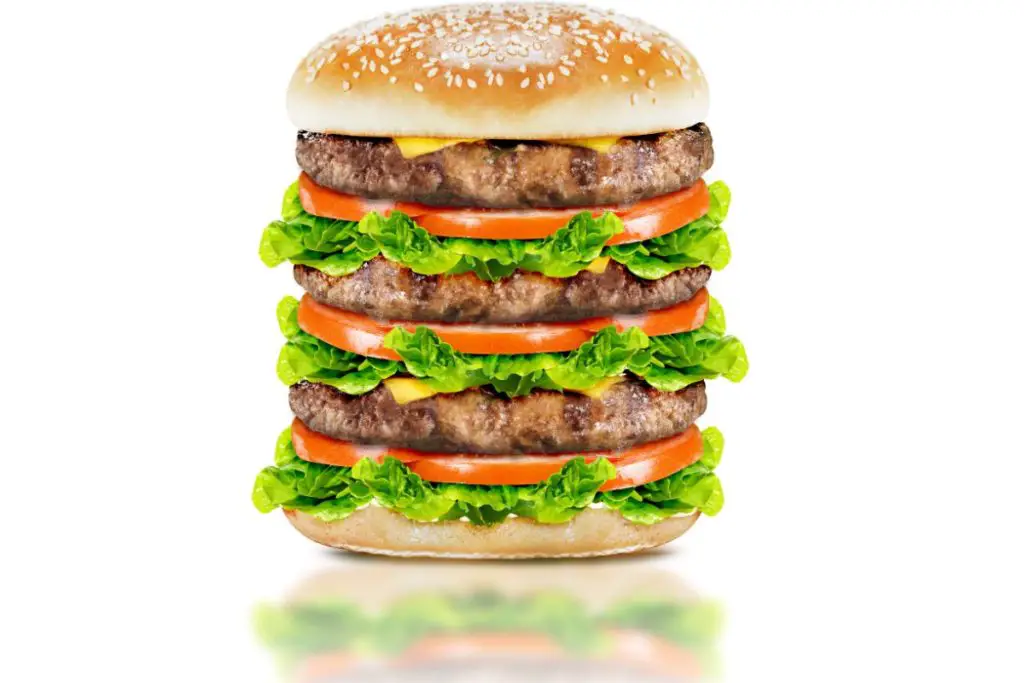
According to a 2018 study, American fast-food dishes, portions, and meals are on a non-stop growth journey.
From 1986 to 2016, the number of fast-food entrées, side dishes, and desserts increased by an astounding 226%, while the portions also grew exponentially [13].
In general, the study concludes that the quality of each meal is worse after each decade—and it doesn’t seem to get any better.
13. American Fast-Food Companies Are 33% Of The Global Market

When foreigners associate fast food with American cuisine, they’re not particularly wrong.
It turns out that the world’s fast-food industry has a revenue value of $885.1 billion as of 2021, and approximately 32.7% of it all is made solely by American companies. Most notoriously? All the top ten fast-food brands in the world are from the United States [14].
14. Spain Accounts For Almost Half Of Global Olive Oil Production
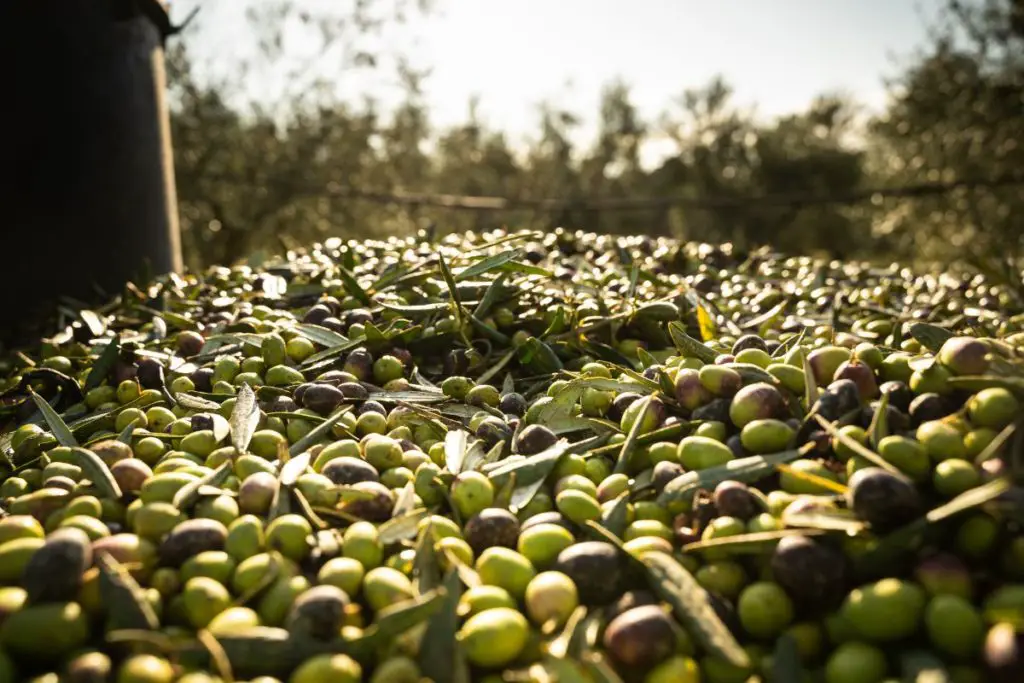
It seems near impossible, but it’s true. Spain—a single country 19 times smaller than the U.S.—is responsible for over half of the total olive oil production worldwide.
Specifically, Spain produces 63% of the European olive oil supply and 53% of the global one. The next four countries—Italy, Greece, Tunisia, and Morocco—make together just half of Spain’s yearly production [15].
In Conclusion
Food production is a major global industry. It is important to keep track of the latest trends and global food production statistics so that we can make informed decisions about the food we grow and eat. I hope you found these statistics interesting and informative. Be sure to check out more data analytics in the food and beverage industry here.
Sources:
- [1] The Alpha Food Labs Future Market (n/d). Biodiversity: The Intersection of Taste and Sustainability. Retrieved from https://thefuturemarket.com/biodiversity
- [2] Narishkin Abby, Cameron Steve, Barranco Victoria, and Hauwanga Kuwilileni (2021) Why the world’s favorite banana may go extinct, and how scientists are trying to save it. Retrieved from https://www.businessinsider.com/cavendish-banana-may-go-extinct-disease-2021-6.
- [3] The World Bank (2020). Water In Agriculture. Retrieved from https://www.worldbank.org/en/topic/water-in-agriculture#1
- [4] U.S. Department of Agriculture. Food Waste FAQs. Retrieved from https://www.usda.gov/foodwaste/faqs
- [5] Elkin Elizabeth and Gebre Samuel (2022). Can The World Feed Itself? Historic Fertilizer Crunch Threatens Food Security. Retrieved from https://finance.yahoo.com/news/world-feed-itself-historic-fertilizer-120018356.html.
- [6] Reuters (2021). Explainer: How four big companies control the U.S. beef industry. Retrieved from https://www.reuters.com/business/how-four-big-companies-control-us-beef-industry-2021-06-17/.
- [7] Food and Agriculture Organization of the United Nations (2021). Statistical Yearbook 2021. Retrieved from https://www.fao.org/documents/card/en/c/cb4477en/.
- [8] Ritchie, Hannah (2019). Food production is responsible for one-quarter of the world’s greenhouse gas emissions. Retrieved from https://ourworldindata.org/food-ghg-emissions
- [9] The Guardian (2019). ‘Are a cow’s farts the worst for the planet?’ Children’s climate questions answered. Retrieved from https://www.theguardian.com/environment/2019/jun/29/cows-farts-children-climate-questions-answered.
- [10] Howarth, Josh. (2022). 9 Massive Food Trends For 2022-2025. Retrieved from https://explodingtopics.com/blog/food-trends
- [11] Welsh, Jennifer (2013). UNITED NATIONS: Starving People Should Eat Bugs. Retrieved from https://www.businessinsider.com/un-eating-insects-to-solve-world-hunger-2013-5
- [12] National Geographic (n/d). What The World Eats. Retrieved from https://www.nationalgeographic.com/what-the-world-eats/
- [13] McCrory Megan, Harbaugh Allen, Appeadu Sarah, Roberts Susan (2019). Fast-Food Offerings in the United States in 1986, 1991, and 2016 Show Large Increases in Food Variety, Portion Size, Dietary Energy, and Selected Micronutrients. Retrieved from https://www.researchgate.net/publication/331379780_Fast-Food_Offerings_in_the_United_States_in_1986_1991_and_2016_Show_Large_Increases_in_Food_Variety_Portion_Size_Dietary_Energy_and_Selected_Micronutrients
- [14] McKay, Fiona (2022). 47+ Fast Food Industry Statistics 2021. Retrieved from https://spendmenot.com/blog/fast-food-industry-statistics/.
- [15] BizVibe (2021). Spanish Olive Oil: Industry Remains the World’s Largest Producer and Exporter. Retrieved from https://blog.bizvibe.com/blog/food-beverages/spanish-olive-oil-industry-remains-largest.
